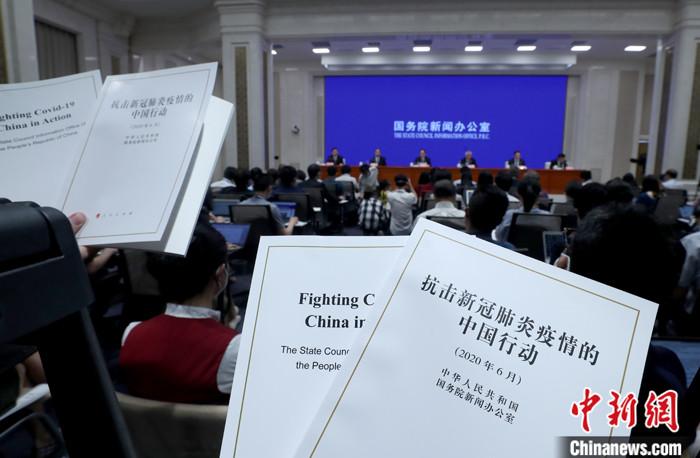(Fighting against New Coronary Pneumonia) White Paper: Per capita medical expenses of patients diagnosed with New Coronary Pneumonia in China is about 23,000 yuan
China News Agency, Beijing, June 7 (Li Jingze) The State Council Information Office of the People's Republic of China issued a white paper on "China Action Against New Coronary Pneumonia Epidemic" on 7th (hereinafter referred to as "White Paper"). The white paper shows that as of May 31, the number of settled inpatients diagnosed in China was 58,000, the total medical cost was 1.35 billion yuan (RMB, the same below), and the per capita medical cost of diagnosed patients was about 23,000 yuan.
On June 7, the Information Office of the State Council of China issued a white paper on "China Action Against New Coronary Pneumonia". The white paper shows that as of May 31, the number of settled inpatients diagnosed in China was 58,000, the total medical cost was 1.35 billion yuan (RMB, the same below), and the per capita medical cost of diagnosed patients was about 23,000 yuan. China News Service reporter Zhang Yushe
Among them, the treatment cost per capita for critically ill patients exceeds 150,000 yuan, and the treatment cost for some critically ill patients is several hundred thousand yuan or even one million yuan, all borne by the state.
The white paper points out that China implements free medical care for patients; timely allocate funds for epidemic prevention and control, to ensure that patients do not affect medical treatment due to cost issues, and to ensure that local medical treatment and epidemic prevention and control are not affected by financial problems. As of May 31, all levels of finance across the country had allocated 162.4 billion yuan in epidemic prevention and control funds.
The New Coronary Pneumonia epidemic is a major public health emergency that has spread the fastest, has the widest infection range, and has the most difficult prevention and control since the founding of New China. It is a crisis and a big test for China. China took more than a month to initially curb the spread of the epidemic. It took about two months to control the daily number of new cases in the local area within single digits. It took about three months to obtain the Wuhan War and the Hubei Defense. The decisive outcome of the war.
The white paper shows that in the face of a sudden attack by an unknown virus, China insists on the supremacy of the people, the supremacy of life, and the power of the country to quickly and effectively mobilize the resources and power of the country and maintain the safety and health of the people at all costs.
The white paper pointed out that China's medical treatment has always aimed at improving the admission rate and cure rate, reducing the infection rate and mortality rate, and implementing classified treatment and hierarchical management. In terms of critical care, Wuhan has built two specialized hospitals for infectious diseases, each capable of accommodating more than 1,000 beds, and renovated and expanded a number of designated hospitals. More than 9,100 copies have solved the problem of large-scale admission and treatment of severe patients. At the same time, China has launched plasma collection and clinical treatment of convalescents in recovery, and established an emergency reserve. As of May 31, a total of 2765 person-times of convalescent plasma were collected nationwide, and 1689 patients received plasma treatment in the convalescent period, achieving good therapeutic effects.
Early intervention for the mild patients. In response to the rapid increase in the number of patients and about 80% being mild, Wuhan has built 16 square cabin hospitals with more than 14,000 beds, so that the mild patients should be collected and treated. The 16 square cabin hospitals have admitted more than 12,000 patients, cured more than 8,000 discharged, and transferred more than 3,500, achieving "zero infection, zero death, and zero turnaround." (Finish)

